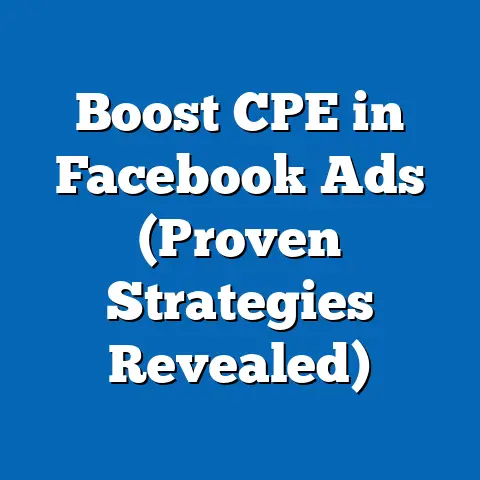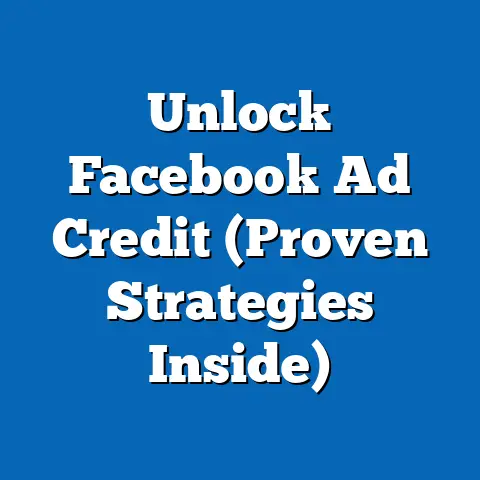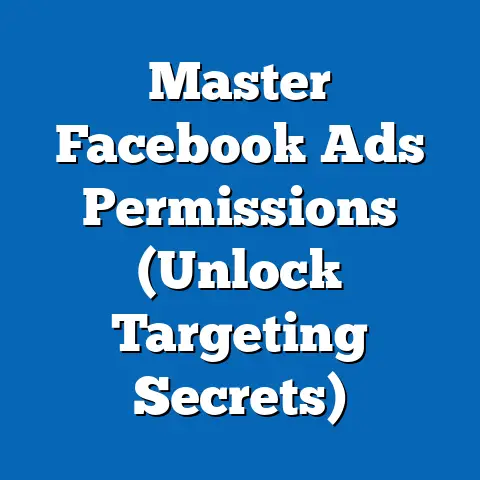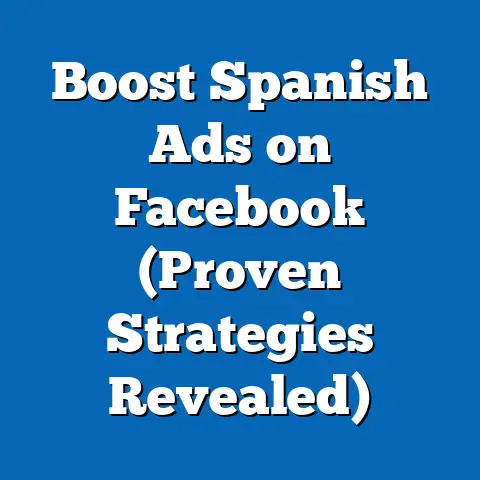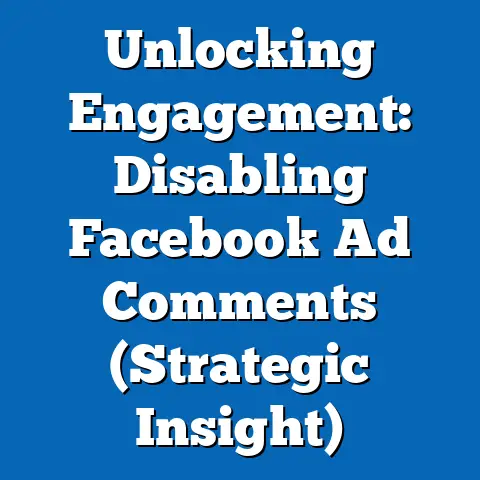Boost Engagement: Download Facebook Messenger Now (Pro Tips)
As the leaves change color and the air turns crisp, we’re officially in the heart of autumn. And with autumn comes a flurry of online activity. People are searching for the perfect Thanksgiving recipes, planning their Halloween costumes, and starting their holiday shopping lists. This seasonal shift presents a golden opportunity for businesses like yours to connect with your audience on a deeper level and drive meaningful engagement.
I’ve been working with businesses of all sizes for years, and one thing remains consistent: the power of direct communication. In a world saturated with noise, cutting through the clutter requires a personal touch. That’s where Facebook Messenger comes in. It’s not just a messaging app; it’s a direct line to your customers, a place to build relationships, and a powerful tool for boosting engagement.
In this article, I’ll share actionable pro tips for using Facebook Messenger effectively to maximize your reach and connect with your audience this season. Whether you’re a seasoned marketer or just starting out, you’ll find valuable insights to help you harness the power of Messenger and turn seasonal enthusiasm into lasting customer relationships. Let’s dive in!
Understanding the Importance of Messenger in Today’s Marketing Landscape
The digital landscape is constantly evolving, and one of the most significant shifts I’ve witnessed is the rise of messaging apps. We’ve moved from broadcasting on traditional social media to engaging in personalized conversations. It’s a move toward authenticity and connection, and it’s where Facebook Messenger shines.
Think about it: How do you communicate with your friends and family? Chances are, you’re using a messaging app. People are spending more and more time in these intimate digital spaces, and businesses need to meet them where they are.
According to Statista, Facebook Messenger boasts over 1.3 billion monthly active users worldwide. That’s a massive audience! But it’s not just about the numbers. It’s about the potential for meaningful interaction. Messenger allows you to:
- Provide instant customer support: Answer questions, resolve issues, and build trust in real-time.
- Personalize the customer experience: Tailor messages and offers to individual needs and preferences.
- Drive sales and conversions: Guide customers through the buying process and close deals directly in the app.
- Build brand loyalty: Foster relationships with customers and create a sense of community.
The competitive advantage of using Facebook Messenger is undeniable. In a world where customers expect immediate gratification, being able to respond quickly and personally can set you apart. It’s not just about selling products; it’s about building relationships that last.
I’ve seen firsthand how Messenger can complement Facebook ads. Think of your ads as the initial hook, and Messenger as the line that reels them in. Instead of just sending people to your website, you can invite them to start a conversation. This allows you to qualify leads, answer their questions, and nurture them towards a purchase. It’s a more engaging and effective way to convert ad clicks into loyal customers.
Key Takeaway: Facebook Messenger is no longer just a messaging app; it’s a powerful marketing tool that can help you connect with your audience on a deeper level, provide excellent customer service, and drive sales. Ignoring it means missing out on a significant opportunity to grow your business.
Setting Up Your Messenger for Success
Okay, you’re convinced that Messenger is important. Now, let’s get down to the nitty-gritty: setting up your Messenger for success. This isn’t just about creating an account; it’s about crafting a Messenger experience that reflects your brand and provides value to your customers.
Here’s a step-by-step guide:
- Create a Facebook Page: If you don’t already have one, create a Facebook Page for your business. This is the foundation for your Messenger presence.
- Access Messenger Settings: Go to your Facebook Page, click on “Settings,” and then select “Messaging.” This is where you’ll find all the options for customizing your Messenger experience.
- Customize Your Greeting: Craft a welcoming greeting that appears when someone starts a conversation with you. This is your first impression, so make it count! Use a friendly tone and let people know what they can expect from interacting with you on Messenger.
- Set Up Automated Responses: Use the “Response Assistant” to set up automated responses for frequently asked questions. This can save you time and ensure that customers receive prompt answers, even when you’re not available.
- Add a Messenger Button to Your Website: Make it easy for people to contact you by adding a Messenger button to your website. This allows them to start a conversation with you directly from your site.
- Integrate with Other Platforms: Connect your Messenger account with other platforms you use, such as your CRM or email marketing software. This will help you streamline your communication and keep track of customer interactions.
Branding is crucial when setting up your Messenger experience. Use your brand colors, logo, and voice to create a consistent and recognizable presence. This will help customers associate your Messenger account with your business and build trust.
I’ve seen businesses get creative with their Messenger customizations. One company I worked with created a custom greeting that included a fun GIF and a personalized message based on the time of day. It was a small touch, but it made a big difference in creating a positive first impression.
Don’t forget about the features of Messenger that can be used for business. Here are a few highlights:
- Quick Replies: Suggest common responses to user inquiries, making it easy for them to find the information they need.
- Persistent Menu: Create a menu of options that users can access at any time, such as FAQs, contact information, and product catalogs.
- Customer Chat Plugin: Embed a Messenger chat window directly on your website, allowing customers to start a conversation with you without leaving your site.
Key Takeaway: Setting up your Messenger for success requires careful planning and attention to detail. By customizing your greeting, setting up automated responses, and integrating with other platforms, you can create a Messenger experience that reflects your brand and provides value to your customers.
Crafting Engaging Messages
Now that you have your Messenger set up, it’s time to start crafting engaging messages that resonate with your audience. This is where the art of conversation comes in. It’s not just about sending out information; it’s about creating a dialogue that keeps people interested and coming back for more.
Here are a few tips for crafting engaging messages:
- Personalize Your Messages: Use the customer’s name and reference previous interactions to create a personalized experience.
- Use a Conversational Tone: Write like you’re talking to a friend, not reading from a script.
- Ask Questions: Encourage interaction by asking questions that invite people to share their thoughts and opinions.
- Provide Value: Offer helpful information, exclusive deals, or entertaining content that your audience will appreciate.
- Use a Clear Call-to-Action: Tell people what you want them to do next, whether it’s visiting your website, making a purchase, or sharing their feedback.
I’ve found that personalization is key to creating engaging messages. When you show people that you know them and care about their needs, they’re more likely to respond and build a relationship with your brand.
For example, if a customer recently purchased a product from you, you could send them a personalized message thanking them for their order and offering them a discount on their next purchase. This shows that you appreciate their business and are willing to go the extra mile to keep them happy.
Visuals can also play a big role in enhancing engagement through Messenger. Images, GIFs, and videos can help you capture attention, convey information, and create a more memorable experience.
Think about it: Would you rather read a long block of text or watch a short, engaging video? Chances are, you’d choose the video. Visuals are more likely to grab your attention and hold your interest.
Here are a few ideas for using visuals in your Messenger messages:
- Share product photos or videos.
- Create animated GIFs to illustrate key points.
- Use images to add personality and humor to your messages.
Conversation starters are also essential for encouraging interaction. Don’t just send out messages; invite people to respond and share their thoughts.
Here are a few examples of compelling conversation starters:
- “What are your plans for this weekend?”
- “What’s your favorite thing about autumn?”
- “What are you hoping to accomplish this season?”
Key Takeaway: Crafting engaging messages requires a combination of personalization, a conversational tone, valuable content, and a clear call-to-action. By using visuals and creating compelling conversation starters, you can keep your audience interested and coming back for more.
Leveraging Facebook Messenger for Customer Interaction
One of the most powerful ways to use Facebook Messenger is for customer service and support. In today’s fast-paced world, customers expect immediate answers to their questions and prompt resolution of their issues. Messenger allows you to provide that level of service and build trust with your audience.
Here are a few tips for using Messenger for customer interaction:
- Respond Quickly: Aim to respond to customer inquiries within minutes, not hours or days.
- Be Proactive: Reach out to customers before they have a problem to offer assistance or provide helpful information.
- Be Empathetic: Show customers that you understand their concerns and are committed to finding a solution.
- Be Transparent: Keep customers informed about the status of their inquiries and any steps you’re taking to resolve their issues.
- Be Personal: Use the customer’s name and reference previous interactions to create a personalized experience.
I’ve seen businesses transform their customer service by using Messenger. One company I worked with was struggling with a high volume of customer inquiries through email. They decided to implement Messenger as a primary channel for customer support, and the results were dramatic.
They were able to respond to inquiries much faster, resolve issues more efficiently, and build stronger relationships with their customers. As a result, their customer satisfaction scores skyrocketed, and they saw a significant increase in repeat business.
Here are a few examples of successful businesses using Messenger to resolve customer queries and enhance satisfaction:
- A clothing retailer uses Messenger to provide personalized styling advice and help customers find the perfect outfit.
- A restaurant uses Messenger to take reservations, answer questions about the menu, and provide updates on wait times.
- A travel agency uses Messenger to book flights, hotels, and activities, and provide 24/7 customer support.
Gathering feedback through Messenger is also a valuable way to improve your products and services. Ask customers for their opinions on your products, your service, and their overall experience. Use this feedback to identify areas for improvement and make changes that will benefit your customers.
Here are a few ways to gather feedback through Messenger:
- Send out surveys or polls.
- Ask customers to rate their experience.
- Invite customers to share their thoughts and suggestions.
Key Takeaway: Facebook Messenger is a powerful tool for providing excellent customer service, resolving customer queries, and gathering feedback. By responding quickly, being proactive, and being empathetic, you can build trust with your audience and improve their overall experience.
Utilizing Messenger Bots for Efficiency
Messenger bots are a game-changer for businesses looking to automate their communication and improve user experience. They can save you time, reduce costs, and provide 24/7 support to your customers.
A Messenger bot is a computer program that simulates a conversation with a user. It can answer questions, provide information, and even take actions on behalf of the user.
Here’s a guide on setting up a Messenger bot:
- Choose a Platform: There are many platforms available for building Messenger bots, such as Chatfuel, ManyChat, and Dialogflow. Choose a platform that meets your needs and budget.
- Design Conversation Flows: Plan out the conversations that your bot will have with users. Think about the questions they’re likely to ask and the information they’ll need.
- Create Bot Responses: Write the responses that your bot will use to answer questions and provide information. Use a conversational tone and keep your responses concise and easy to understand.
- Test Your Bot: Before you launch your bot, test it thoroughly to make sure it’s working correctly and providing accurate information.
- Monitor Your Bot: Once your bot is live, monitor its performance and make adjustments as needed. Pay attention to user feedback and identify areas where your bot can be improved.
When designing your conversation flows, think about the user experience. Make sure your bot is easy to navigate and provides clear instructions. Use buttons, quick replies, and other interactive elements to guide users through the conversation.
It’s also important to ensure a seamless transition to human operators when necessary. Your bot should be able to recognize when it can’t answer a question or resolve an issue and transfer the user to a human agent.
I’ve seen businesses successfully implement Messenger bots to boost engagement and improve customer satisfaction. One company I worked with created a bot that could answer frequently asked questions about their products, provide personalized recommendations, and even process orders.
The bot was able to handle a large volume of inquiries, freeing up their human agents to focus on more complex issues. As a result, their customer satisfaction scores increased, and they saw a significant boost in sales.
Here are a few best practices for bot responses:
- Use a Conversational Tone: Write like you’re talking to a friend, not reading from a script.
- Keep Your Responses Concise: Get to the point quickly and avoid using jargon or technical terms.
- Provide Clear Instructions: Tell users what you want them to do next.
- Offer Help: Let users know that they can always ask for help if they get stuck.
Key Takeaway: Messenger bots can save you time, reduce costs, and improve user experience. By designing effective conversation flows, creating engaging responses, and ensuring a seamless transition to human operators, you can harness the power of bots to boost engagement and improve customer satisfaction.
Promoting Your Messenger Channel
Now that you have a Messenger channel set up and ready to go, it’s time to promote it to your audience. You need to let people know that you’re available on Messenger and encourage them to start conversations with you.
Here are a few strategies for promoting your Messenger channel:
- Use Facebook Ads: Create Facebook ads that drive traffic to your Messenger channel. Target your ads to people who are interested in your products or services.
- Add a Messenger Button to Your Website: Make it easy for people to contact you by adding a Messenger button to your website.
- Include a Messenger Link in Your Email Signature: Add a link to your Messenger channel in your email signature.
- Share Your Messenger Link on Social Media: Share your Messenger link on your social media channels.
- Use a QR Code: Create a QR code that people can scan with their phones to start a conversation with you on Messenger.
Facebook ads can be a particularly effective way to drive traffic to Messenger. You can target your ads to specific demographics, interests, and behaviors, ensuring that you’re reaching the right audience.
When creating your ads, use a clear and compelling call-to-action that encourages people to start conversations with you. Here are a few examples:
- “Message us now to learn more!”
- “Chat with us on Messenger!”
- “Get a free quote on Messenger!”
Integrating Messenger marketing with other social media platforms and digital marketing efforts can also help you reach a wider audience. For example, you can include a Messenger link in your Instagram bio or run a contest on Twitter that encourages people to message you on Messenger.
I’ve seen businesses get creative with their Messenger promotions. One company I worked with created a scavenger hunt on their website that led people to their Messenger channel. The first person to message them on Messenger won a prize.
Key Takeaway: Promoting your Messenger channel is essential for driving traffic and encouraging interaction. By using Facebook ads, adding a Messenger button to your website, and integrating with other social media platforms, you can reach a wider audience and start more conversations.
Measuring Success and Adjusting Your Strategy
You’ve set up your Messenger channel, crafted engaging messages, and promoted it to your audience. Now, it’s time to measure your success and adjust your strategy as needed.
Tracking your key performance indicators (KPIs) is essential for understanding how well your Messenger engagement efforts are performing. Here are a few KPIs to track:
- Number of Conversations: How many conversations are you having on Messenger?
- Response Time: How quickly are you responding to customer inquiries?
- Customer Satisfaction: How satisfied are your customers with your Messenger experience?
- Conversion Rate: How many conversations are leading to sales or other desired outcomes?
- Bot Engagement: How are people interacting with your Messenger bot?
Facebook provides a variety of tools and analytics to measure user interactions and engagement rates. You can use these tools to track your KPIs and identify areas where you can improve your Messenger strategy.
Here are a few examples of tools and analytics provided by Facebook:
- Messenger Insights: Provides data on the number of conversations, response time, and other key metrics.
- Facebook Analytics: Allows you to track user behavior across your website, app, and Messenger channel.
- Custom Events: Enables you to track specific actions that users take on Messenger, such as clicking a button or making a purchase.
Analyzing your data is crucial for refining your messaging strategies and improving customer interactions. Look for patterns and trends in your data to identify what’s working and what’s not.
For example, if you notice that your response time is slow, you may need to add more staff to your customer service team or implement a Messenger bot to handle some of the workload.
Continuous improvement is essential for success with Facebook Messenger. Stay up-to-date with Facebook’s updates and features and experiment with new strategies to see what works best for your business.
Key Takeaway: Measuring your success and adjusting your strategy is essential for maximizing your return on investment with Facebook Messenger. By tracking your KPIs, analyzing your data, and staying up-to-date with Facebook’s updates and features, you can continuously improve your Messenger strategy and achieve your goals.
Conclusion
As the days get shorter and the nights get longer, remember the power of connection. Facebook Messenger offers a unique opportunity to engage with your audience on a personal level, build relationships, and drive meaningful results, especially during this active season.
We’ve covered a lot in this article, from setting up your Messenger channel to crafting engaging messages, leveraging Messenger for customer interaction, utilizing Messenger bots, promoting your channel, and measuring your success.
By implementing the pro tips I’ve shared, you can harness the power of Facebook Messenger to boost engagement, improve customer satisfaction, and drive sales.
Don’t wait! Download Facebook Messenger now and start experimenting with these strategies. The sooner you start, the sooner you’ll see the benefits.
And now, I want to hear from you. What are your experiences with Facebook Messenger? What challenges have you faced? What successes have you achieved? Share your thoughts in the comments below!
And if you found this article helpful, be sure to subscribe to my newsletter for more insights on social media marketing. Together, we can unlock the full potential of Facebook Messenger and take your business to the next level.


